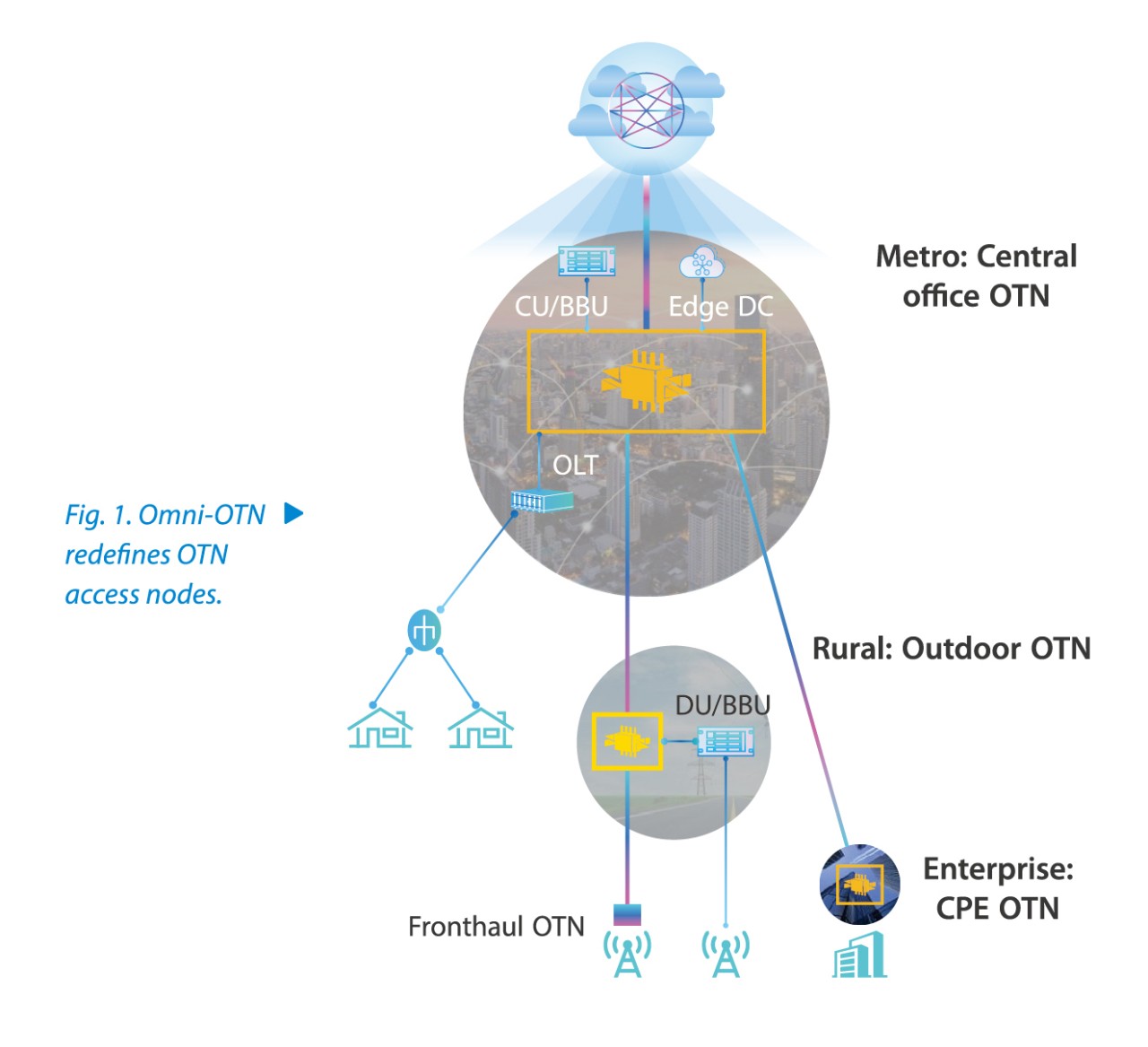Omni-OTN Accelerates Growth of All-Optical MAN
Higher Expectations for OTN Access Nodes
All-optical network is the inevitable trend of network development and evolution and is also generally agreed in the industry. It can offer ultra-large bandwidth, ultra-low latency, ultra-high reliability, massive connections, and intelligent service allocation and grooming. As a major part of the all-optical network, OTN is moving down to the edge to transport growing complex services. OTN access nodes support intelligent, ubiquitous, ultra-broadband, full-scenario access. Any service can access OTN via the access node as needed. This lays the foundation for OTN to serve as the all-optical base for integrated service transport, and makes it possible to access the increasingly booming computing networks and obtain computing resources on demand.
Definition of Access Nodes in All-Optical MAN
ZTE’s Omni-OTN redefines OTN access nodes in three aspects: full scenario, full service and full coverage (Fig. 1).

—Full scenario: Omni-OTN devices move down to MAN edges for full-scenario deployment including 4G, 5G, OLT, enterprise network and edge cloud. They can replace SDH devices and switches, saving equipment room by 30% and consuming about 35% less power. With large capacity, small size, low power consumption and industry-leading advantages, Omni-OTN
can be deployed on an access node. With simplified network architecture and its own device advantages, Omni-OTN offers a better choice to operators, that is a new type of device that covers all scenarios to decrease the difficulty of network design, evolution and O&M and considerably reduce TCO of the whole network.
—Full service: Full scenario supports at least 5-in-1, that is 4G/5G/OLT/enterprise network/edge cloud at an OTN access node. With the growth of service types and scenarios, more and more services and scenarios will emerge in the OTN network via Omni-OTN. The full-service access as well as flexible adaptation and grooming of access services enable Omni-OTN to have the “all-in-1” capability. Omni-OTN incorporates other transport technologies, integrates multiple logical planes into a single OTN subrack/platform, and shares some hardware devices such as subrack, boards and cross-connect chips. The integration involves SDH plane (VC cross-connection) and packet plane (PKT cross-connection), along with its own OTN plane (ODUk cross-connection) and OTN-derived OSU plane (OSU cross-connection). With four planes on one platform, Omni-OTN can transmit a variety of services from 2M to 100G and meet diverse service needs such as four hybrid cross-connections, large and fine granularities, rigid/flexible transport, and on-demand selection.
—Full coverage: The demand for better transport quality, large bandwidth, low latency and high reliability drives OTN to move down from the MAN core and aggregation layers to integrated service access areas and villages to access more users. Omni-OTN can move to the lowest point of integrated OTN transport to complete “full service” access and grooming and “full scenario” transport. The deployment at the access layer has complex environment, poor conditions and strict requirements on devices. Omni-OTN devices can be installed indoor or outdoor in a cabinet or mounted on a wall to meet the needs of various deployment environments. Omni-OTN’s natural long-haul transmission attribute effectively makes up for the shortcomings of poor quality and large loss of optical cables at the access layer. Its system capacity rises to 80×200G from 40×10G of the traditional OTN access-layer, and can evolve to a higher capacity to address the bandwidth pressure of “full service”. With strong adaptability for deployment, Omni-OTN expands the OTN coverage, increases network capacity, enriches “full scenario” applications, and makes the “full service” more accessible. Its deep coverage also makes OTN-based one-hop connection and ultra-low latency possible.
Conclusion
Omni-OTN is deployed at the end of an all-optical network. Its development determines the control range and transport capacity of the whole all-optical network. As the ingress of OTN, Omni-OTN characterized by “full scenario”, “full service” and “full coverage” constantly expands the OTN coverage and enhances flexible network grooming for high-quality OTN extension.